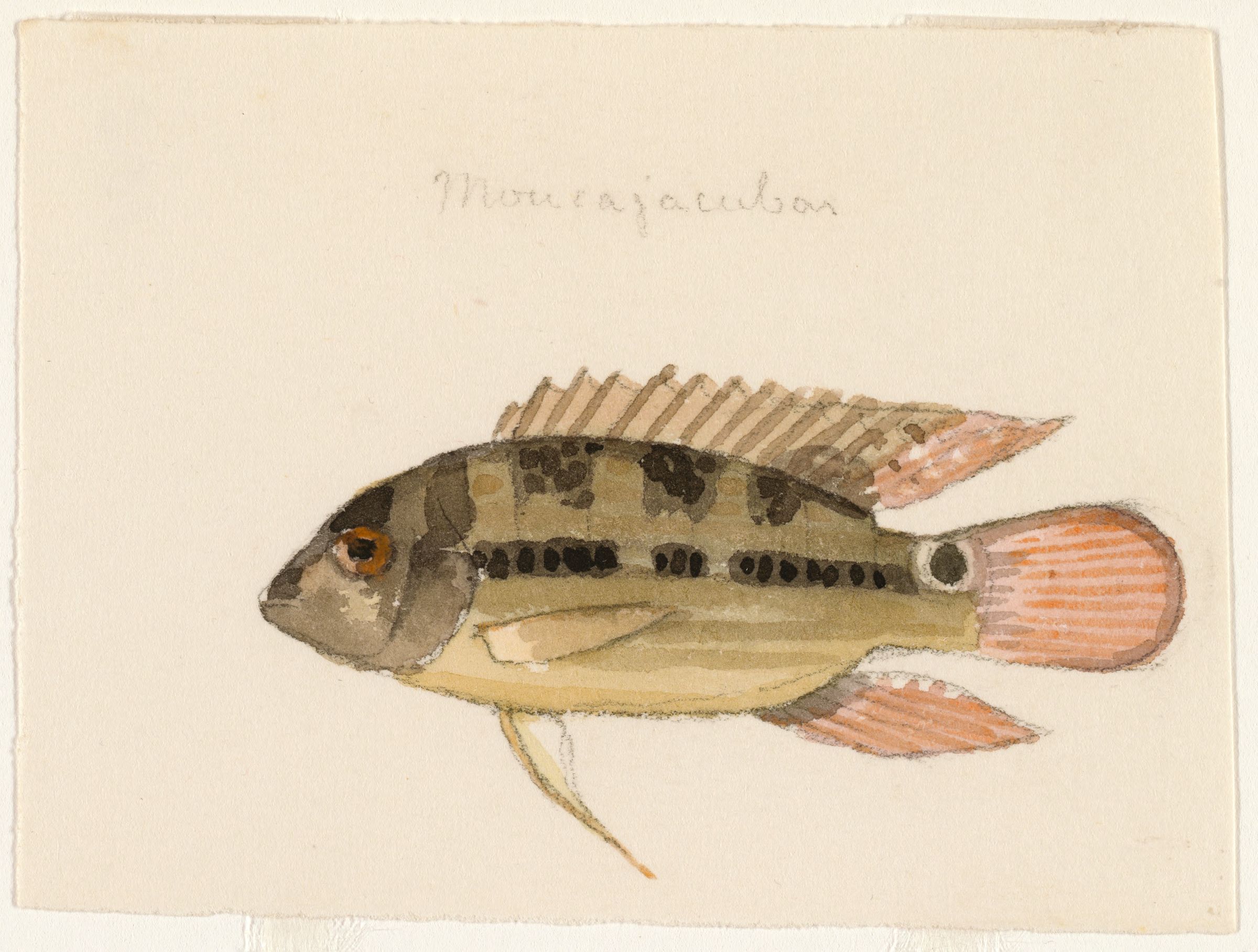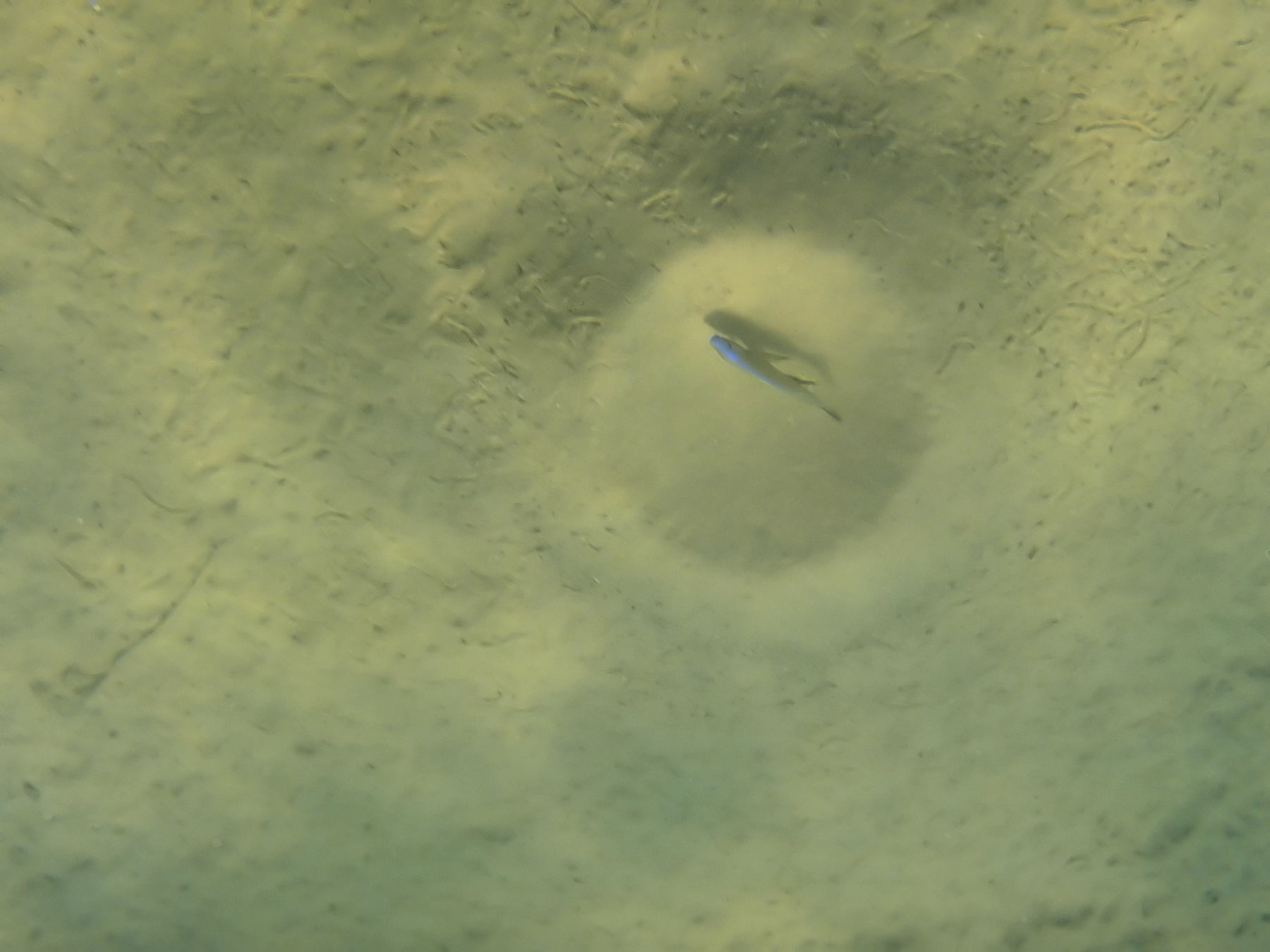|
Astatoreochromis
''Astatoreochromis'' is a small genus of haplochromine cichlids endemic to riverine habitats in East Africa. '' Tilapia bemini'', usually placed in the tilapiines, may be rather close to this genus. However, extensive hybridization capabilities of African cichlids seriously confound analyses of phylogeny based on mtDNA, while morphological analyses tend to yield little information due to widespread parallel evolution. Species There are currently three recognized species in this genus: * '' Astatoreochromis alluaudi'' Pellegrin, 1904 (Alluaud's Haplo) * '' Astatoreochromis straeleni'' (Poll, 1944) (Bluelip Haplo) * '' Astatoreochromis vanderhorsti'' ( Greenwood, 1954) — validity questionable, likely a synonym A synonym is a word, morpheme, or phrase that means precisely or nearly the same as another word, morpheme, or phrase in a given language. For example, in the English language, the words ''begin'', ''start'', ''commence'', and ''initiate'' are a ... of ''A. straeleni ... [...More Info...] [...Related Items...] OR: [Wikipedia] [Google] [Baidu] |
Astatoreochromis Alluaudi
Alluaud's haplo (''Astatoreochromis alluaudi'') is a species of freshwater fish in the cichlid family, Cichlidae. It is native to East Africa, where it occurs in many lakes, including Lake Victoria. This fish reaches about 19 centimeters in maximum length. It lives in swampy waters. It is omnivorous and is utilized to control snails. In the wild, snails make up a significant part its diet. This is reflected in its thick jaw, adapted to crush shells. It is not considered to be a threatened species by the International Union for Conservation of Nature (IUCN). The specific name honours Charles A. Alluaud (1861–1949) the French explorer and entomologist who was the collector of the type specimen In biology, a type is a particular wikt:en:specimen, specimen (or in some cases a group of specimens) of an organism to which the scientific name of that organism is formally associated. In other words, a type is an example that serves to ancho ... of this species. References all ... [...More Info...] [...Related Items...] OR: [Wikipedia] [Google] [Baidu] |
Astatoreochromis Straeleni
The bluelip haplo (''Astatoreochromis straeleni'') is a species of fish in the family Cichlidae. It is found in Burundi, the Democratic Republic of the Congo, Tanzania, and Zambia. Its natural habitat is rivers. It is not considered a threatened species by the IUCN. The specific name honours the director of the Royal Belgian Institute of Natural Sciences, Victor van Straelen Victor van Straelen (14 June 1889 – 29 February 1964) was a Belgian conservationist, palaeontologist and carcinologist. Van Straelen was born in Antwerp on 14 June 1889, and worked chiefly as a palaeontologist until his retirement in 1954. He ... (1889-1964). References Bluelip haplo Fish described in 1944 Taxonomy articles created by Polbot {{Pseudocrenilabrinae-stub ... [...More Info...] [...Related Items...] OR: [Wikipedia] [Google] [Baidu] |
Cichlid
Cichlids () are a large, diverse, and widespread family of percomorph fish in the family Cichlidae, order Cichliformes. At least 1,760 species have been scientifically described, making it one of the largest vertebrate families, with only the Cyprinidae being more speciose. New species are discovered annually, and many species remain undescribed. The actual number of species is therefore unknown, with estimates varying between 2,000 and 3,000. They are native to the Neotropics, Africa (including Madagascar), the Middle East, and the Indian subcontinent, although some species have been introduced worldwide. Many cichlids, particularly tilapia, are important food fishes, while others, such as the '' Cichla'' species, are valued game fish. The family also includes many popular freshwater aquarium fish kept by hobbyists, including the angelfish, oscars, and discus. Cichlids have the largest number of endangered species among vertebrate families, most in the haplochrom ... [...More Info...] [...Related Items...] OR: [Wikipedia] [Google] [Baidu] |
Jacques Pellegrin
Jacques Pellegrin (12 June 1873 – 12 August 1944) was a French zoology, zoologist. Biography Pellegrin was born in Paris on 12 June 1873. He worked under zoologist Léon Vaillant (chair of reptiles and fishes) at the ''Muséum national d'histoire naturelle''. From 1897, Pellegrin served as ''préparateur'' at the museum. He obtained doctorates in medicine (1899) and science (1904), and in 1908 was named as an assistant director. After many missions abroad, he became sub-director of the museum in 1937, and replaced Louis Roule (1861–1942) as the chairperson of herpetology and ichthyology. He published over 600 scientific books and articles and scientifically described around 350 new species. He named a number of fishes from the family Cichlidae, such as the genera ''Astatoreochromis'', ''Astatotilapia'', ''Boulengerochromis'', ''Lepidiolamprologus'', ''Nanochromis'' and ''Ophthalmotilapia''. Pellegrin fought with the French Resistance during World War II. He was killed by ... [...More Info...] [...Related Items...] OR: [Wikipedia] [Google] [Baidu] |
Haplochromine
__NOTOC__ The haplochromine cichlids are a tribe of cichlids in subfamily Pseudocrenilabrinae called Haplochromini. This group includes the type genus ''Haplochromis'' plus a number of closely related genera such as '' Aulonocara'', '' Astatotilapia'', and '' Chilotilapia''. They are endemic to eastern, southern and northern Africa, except for '' Astatotilapia flaviijosephi'' in the Middle East. A common name in a scientific context is East African cichlids—while they are not restricted to that region, they are the dominant Cichlidae there. This tribe was extensively studied by Ethelwynn Trewavas, who made major reviews in 1935 and 1989, at the beginning and at the end of her career in ichthyology. Even today, numerous new species are being described each year. The haplochromines were in older times treated as subfamily Haplochrominae, However, the great African radiation of pseudocrenilabrine cichlids is certainly not monophyletic without them, and thus they are today ranked ... [...More Info...] [...Related Items...] OR: [Wikipedia] [Google] [Baidu] |
Morphology (biology)
Morphology (from Ancient Greek μορφή (morphḗ) "form", and λόγος (lógos) "word, study, research") is the study of the form and structure of organisms and their specific structural features. This includes aspects of the outward appearance (shape, structure, color, pattern, size), as well as the form and structure of internal parts like bones and organs, i.e., anatomy. This is in contrast to physiology, which deals primarily with function. Morphology is a branch of life science dealing with the study of the overall structure of an organism or taxon and its component parts. History The etymology of the word "morphology" is from the Ancient Greek (), meaning "form", and (), meaning "word, study, research". While the concept of form in biology, opposed to function, dates back to Aristotle (see Aristotle's biology), the field of morphology was developed by Johann Wolfgang von Goethe (1790) and independently by the German anatomist and physiologist Karl Fried ... [...More Info...] [...Related Items...] OR: [Wikipedia] [Google] [Baidu] |
Synonym (taxonomy)
In taxonomy, the scientific classification of living organisms, a synonym is an alternative scientific name for the accepted scientific name of a taxon. The Botanical nomenclature, botanical and Zoological nomenclature, zoological codes of nomenclature treat the concept of synonymy differently. * In nomenclature, botanical nomenclature, a synonym is a Binomial nomenclature, scientific name that applies to a taxon that now goes by a different scientific name. For example, Carl Linnaeus, Linnaeus was the first to give a scientific name (under the currently used system of scientific nomenclature) to the Norway spruce, which he called ''Pinus abies''. This name is no longer in use, so it is now a synonym of the current scientific name, ''Picea abies''. * In zoology, moving a species from one genus to another results in a different Binomial nomenclature, binomen, but the name is considered an alternative combination rather than a synonym. The concept of synonymy in zoology is reserved f ... [...More Info...] [...Related Items...] OR: [Wikipedia] [Google] [Baidu] |
Humphry Greenwood
Peter Humphry Greenwood Fellow of the Royal Society, FRS FIBiol (21 April 1927 – 3 March 1995) was an English ichthyologist. Humphry married fellow student Marjorie George (1924 – 2006) in 1950. He was elected a Fellow of the Royal Society in 1985. He was known for his work on the species flocks of cichlids in the African Great Lakes, and for studies of the phylogeny and systematics of teleosts. Tribute The cichlid fish ''Diplotaxodon greenwoodi'' is named for him. Also ''Brachyaetoides greenwoodi'' Bonde, 2008 is named for him. As is ''Enteromius greenwoodi'' (Max Poll, Poll 1967). See also *:Taxa named by Humphry Greenwood References External links * 1927 births 1995 deaths Fellows of the Royal Society English ichthyologists 20th-century English zoologists Members of the Royal Swedish Academy of Sciences Presidents of the Linnean Society of London {{UK-zoologist-stub ... [...More Info...] [...Related Items...] OR: [Wikipedia] [Google] [Baidu] |
Max Poll
Max Fernand Leon Poll (21 July 1908 in Ruisbroek – 13 March 1991 in Uccle) was a Belgian ichthyologist who specialised in the Cichlidae. In the years 1946 and 1947 he organised an expedition to Lake Tanganyika. He has described several species of Pseudocrenilabrinae, such as '' Lamprologus signatus'', '' Steatocranus casuarius'', '' Neolamprologus brichardi'', and '' Neolamprologus pulcher''. He was a member of The Royal Academies for Science and the Arts of Belgium, professor at the Université libre de Bruxelles, and conservator at the Royal Museum of the Belgian Congo in Tervuren. He was an honorary member of the American Society of Ichthyologists and Herpetologists. Taxon named in his honor Named after him are species and taxa In biology, a taxon (back-formation from ''taxonomy''; : taxa) is a group of one or more populations of an organism or organisms seen by taxonomists to form a unit. Although neither is required, a taxon is usually known by a particula ... [...More Info...] [...Related Items...] OR: [Wikipedia] [Google] [Baidu] |
Parallel Evolution
Parallel evolution is the similar development of a trait in distinct species that are not closely related, but share a similar original trait in response to similar evolutionary pressure.Zhang, J. and Kumar, S. 1997Detection of convergent and parallel evolution at the amino acid sequence level. ''Mol. Biol. Evol.'' 14, 527-36. Parallel vs. convergent evolution Given a trait that occurs in each of two lineages descended from a specified ancestor, it is possible in theory to define parallel and convergent evolutionary trends strictly, and distinguish them clearly from one another. However, the criteria for defining convergent as opposed to parallel evolution are unclear in practice, so that arbitrary diagnosis is common. When two species share a trait, evolution is defined as parallel if the ancestors are known to have shared that similarity; if not, it is defined as convergent. However, the stated conditions are a matter of degree; all organisms share common ancestors. Scientis ... [...More Info...] [...Related Items...] OR: [Wikipedia] [Google] [Baidu] |



